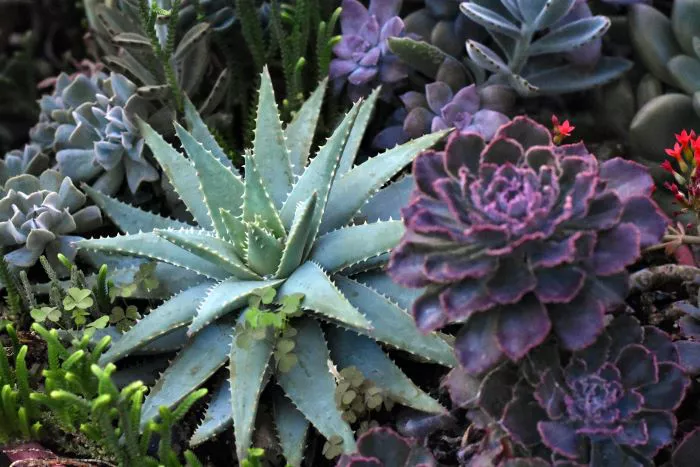Succulents have become increasingly popular for their unique aesthetic and low maintenance requirements. They are often used in arrangements and as decorative elements in homes and gardens. If you have fresh cut succulents and want to propagate or plant them, it is essential to understand the proper techniques. This article will guide you through the process of planting fresh cut succulents, ensuring they thrive in their new environment.
Understanding Fresh Cut Succulents
Fresh cut succulents are segments taken from healthy plants. These cuttings can be used to propagate new plants. Unlike traditional planting, where roots are already established, planting cut succulents requires a different approach. The goal is to encourage the cuttings to develop roots while minimizing the risk of rot.
When you take a cutting, it is crucial to select healthy, mature leaves or stems. This will increase the chances of successful propagation. The process involves allowing the cuttings to callous over before planting them in soil.
Preparing the Cuttings
Before planting your fresh cut succulents, you need to prepare the cuttings properly.
Select Healthy Cuttings: Choose healthy leaves or stems from the parent plant. Look for plump, firm leaves that are free from blemishes or signs of disease. If you are using stem cuttings, ensure they are at least a few inches long.
Make the Cut: Use a clean, sharp knife or scissors to make a clean cut. For leaf cuttings, cut the leaf close to the stem. For stem cuttings, cut just below a node where leaves emerge. This is where roots will eventually develop.
Let Them Callous: After cutting, place the cuttings in a dry, shaded area for a few days. This allows the cut end to callous over. Callousing is essential as it prevents moisture loss and reduces the risk of rot when planted in soil.
Choosing the Right Soil
Choosing the right soil is critical for the successful growth of your fresh cut succulents. Succulents thrive in well-draining soil that prevents water retention.
Use Cactus Mix: A commercial cactus or succulent mix is ideal. These mixes are designed to provide excellent drainage while retaining some moisture.
Create Your Own Mix: If you prefer to make your own soil, combine equal parts of potting soil, coarse sand, and perlite or pumice. This mixture will ensure proper drainage and aeration for the roots.
Check pH Levels: Succulents prefer slightly acidic to neutral soil with a pH between 6.0 and 7.0. Most commercial mixes are suitable, but you can test your homemade mix with a pH meter if desired.
Planting the Cuttings
Once your cuttings have calloused and you have prepared the soil, it is time to plant them.
Fill Containers: Choose containers with drainage holes to prevent water from accumulating. Fill the containers with your prepared soil mix, leaving some space at the top.
Plant the Cuttings: Make a small hole in the soil with your finger or a pencil. Gently place the cut end of the succulent into the hole, ensuring it is upright. Cover the cut end with soil, but do not bury the entire leaf or stem.
Space the Cuttings: If you are planting multiple cuttings in the same container, ensure they are spaced apart. This allows air circulation and prevents overcrowding, which can lead to rot.
Watering and Care
After planting your fresh cut succulents, proper care is essential for their successful establishment.
Initial Watering: After planting, do not water immediately. Allow the cuttings to settle for a few days. This helps the cut ends to heal further. After a few days, lightly mist the soil or water it sparingly.
Watering Schedule: Once the cuttings show signs of growth, such as new leaves or roots, you can establish a regular watering schedule. Water only when the soil is completely dry. Overwatering can lead to root rot.
Provide Adequate Light: Place your newly planted succulents in a bright location with indirect sunlight. Direct sunlight can be too harsh for young cuttings and may cause them to scorch. Gradually introduce them to more light as they establish.
Monitor for Pests: Keep an eye on your cuttings for any signs of pests or disease. Common pests include mealybugs and aphids. If you notice any issues, treat them promptly with insecticidal soap or neem oil.
Transplanting Established Succulents
Once your cuttings have developed roots and are growing well, you may want to transplant them into larger containers or outdoor gardens.
Timing: Wait until the roots are well established, which may take a few weeks to a couple of months, depending on the succulent type and environmental conditions.
Choose the Right Container: When transplanting, select a container that is slightly larger than the current one. Ensure it has adequate drainage holes.
Use Fresh Soil: Use fresh, well-draining soil when transplanting. This will provide the nutrients needed for continued growth.
Water After Transplanting: Water the newly transplanted succulents lightly to help settle the soil. Avoid overwatering, as the roots may still be sensitive after the move.
Conclusion
Planting fresh cut succulents can be a rewarding experience. By understanding the proper techniques for preparing cuttings, choosing the right soil, and providing adequate care, you can successfully propagate and grow new succulent plants. Remember to be patient during the process, as it may take time for the cuttings to establish roots and begin to thrive. With the right care, your fresh cut succulents will flourish, adding beauty to your home or garden. Enjoy the journey of nurturing these remarkable plants and watching them grow.


